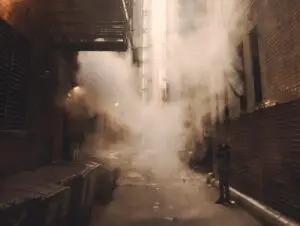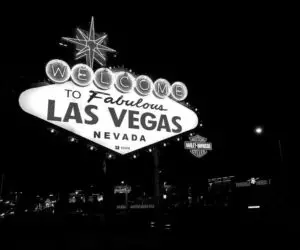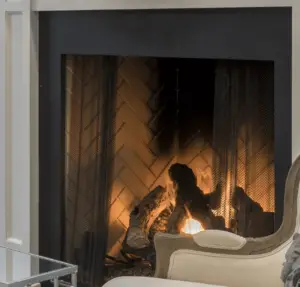How Does A Ventless Gas Fireplace Work?
Ventless gas fireplaces are a hot topic these days as they have been rapidly gaining in popularity. They have become more affordable and available than ever before, with many new models coming to market in the last few years alone. But are ventless gas fireplaces right for you? Do you want to know how does a ventless gas fireplace work before making a purchase decision? If so, then read this blog article.
What is a ventless gas fireplace and how does it work?
A ventless gas fireplace is a type of fireplace that does not require a chimney or any other type of ventilation. They are also known as “unvented” or “vent-free” fireplaces. Ventless gas fireplaces are very popular because they are easy to install and can be placed almost anywhere in your home.
Ventless gas fireplaces work by burning natural gas or propane. The gases are burned in a sealed chamber and the resulting heat is circulated into the room by a blower fan. The main advantage of a ventless gas fireplace is that they are very efficient because all of the heat produced is delivered into the room.
Another advantage of ventless fireplaces is that they do not produce any harmful fumes or pollutants. Because the gases are burned in a sealed chamber, there is no risk of dangerous carbon monoxide buildup.
Ventless gas fireplaces use a sealed combustion chamber and an oxygen sensor to make sure that there is enough oxygen for the fire to burn safely. The sensor also regulates the amount of fuel that is being burned, so that the fire doesn’t get too hot.
The combustion chamber is lined with refractory bricks that reflect heat back into the room, and a blower circulates the air to help distribute the heat evenly.
Ventless gas fireplaces are safe and efficient, and they can be a great addition to any home.
How to make sure your ventless gas fireplace is safe
When it comes to safety, you can never be too careful. That’s why it’s important to make sure your ventless gas fireplace is up to par. Here are a few tips to help you out:
- Regularly inspect your fireplace for any signs of damage or wear and tear. This includes checking the gas line, connections, and seals.
- Make sure the area around your fireplace is clear of any flammable materials.
- Never leave your fireplace unattended while it’s on.
- Follow the manufacturer’s instructions when it comes to operating your fireplace.
- Have your fireplace serviced by a professional on a yearly basis.
By following these simple tips, you can help ensure that your ventless gas fireplace is safe and efficient.
Can ventless gas fireplaces be used indoors?
But ventless gas fireplaces be used indoors? The short answer is yes, but there are some things you need to know before using one in your home.
Ventless gas fireplaces work by burning natural gas or propane. The combustion process creates water vapor and carbon dioxide, but no soot or smoke. That means there’s no need for a chimney or vent, which makes installation much easier and less expensive.
However, because ventless gas fireplaces don’t have a way to expel these gases, they need to be used with caution. Here are some tips for using a ventless gas fireplace safely:
- Only use the fireplace in well-ventilated areas. Make sure there are windows or doors open to allow fresh air to circulate.
- Don’t use the fireplace for more than four hours at a time. This will give the gases time to dissipate so they don’t build up indoors.
- Don’t use the fireplace if anyone in the house is pregnant, has respiratory problems, or is sensitive to fumes.
Types of ventless fireplaces
There are two types of ventless fireplaces: gas and electric. Gas fireplaces use either propane or natural gas, while electric fireplaces use electricity to heat a element. Both types of fireplaces are effective at providing heat and can be used without a chimney or other vents.
Ventless gas fireplaces are the most popular type of fireplace because they are easy to install and can be used in any room. Electric fireplaces are a good choice for people who want the look of a traditional fireplace without the hassle of installation.
What are the advantages of a ventless gas fireplace?
There are many advantages to having a ventless gas fireplace. One of the main advantages is that they are very efficient. They do not require a chimney or flue, so all of the heat produced by the fire stays in your home. Ventless gas fireplaces also produce very little pollution and are safe to use in any room in your home.
What are the disadvantages of a ventless gas fireplace?
There are some disadvantages to using a ventless gas fireplace that you should be aware of before making your purchase.
One of the biggest disadvantages of a ventless gas fireplace is that they can be less efficient than other types of fireplaces. This is because the heat generated by the fireplace is not vented outside, so it can escape through cracks in the unit or into the room. As a result, you may find that your gas bill is higher with a ventless gas fireplace.
Another disadvantage of ventless gas fireplaces is that they can produce pollutants such as carbon monoxide. This is because the combustion process produces pollutants that can be harmful to your health if inhaled. Therefore, it is important to make sure that your ventless gas fireplace is properly installed and maintained to minimize the risk of exposure to these pollutants.
Alternatives to a ventless gas fireplace
If you’re looking for an alternative to a ventless gas fireplace, there are plenty of options available. You can choose from a wide variety of electric fireplaces, which are becoming increasingly popular. Many people also prefer wood-burning fireplaces, which can create a more traditional look in your home.
Final words
A ventless gas fireplace is a great option for those who want the look and feel of a real fire without the hassle of dealing with a traditional chimney. These fireplaces work by burning clean-burning propane or natural gas, which produces very little emissions. This makes them an environmentally-friendly option that can be used indoors without worry about ventilation.




